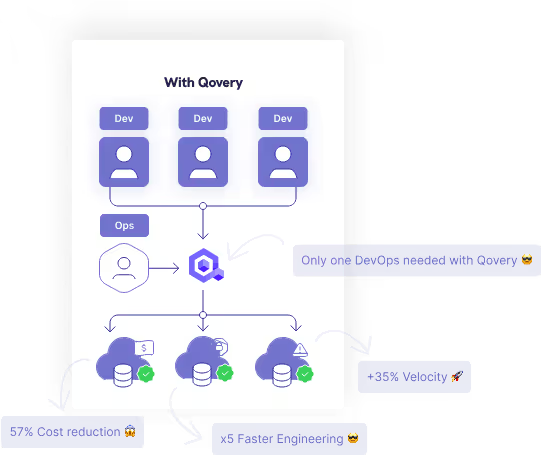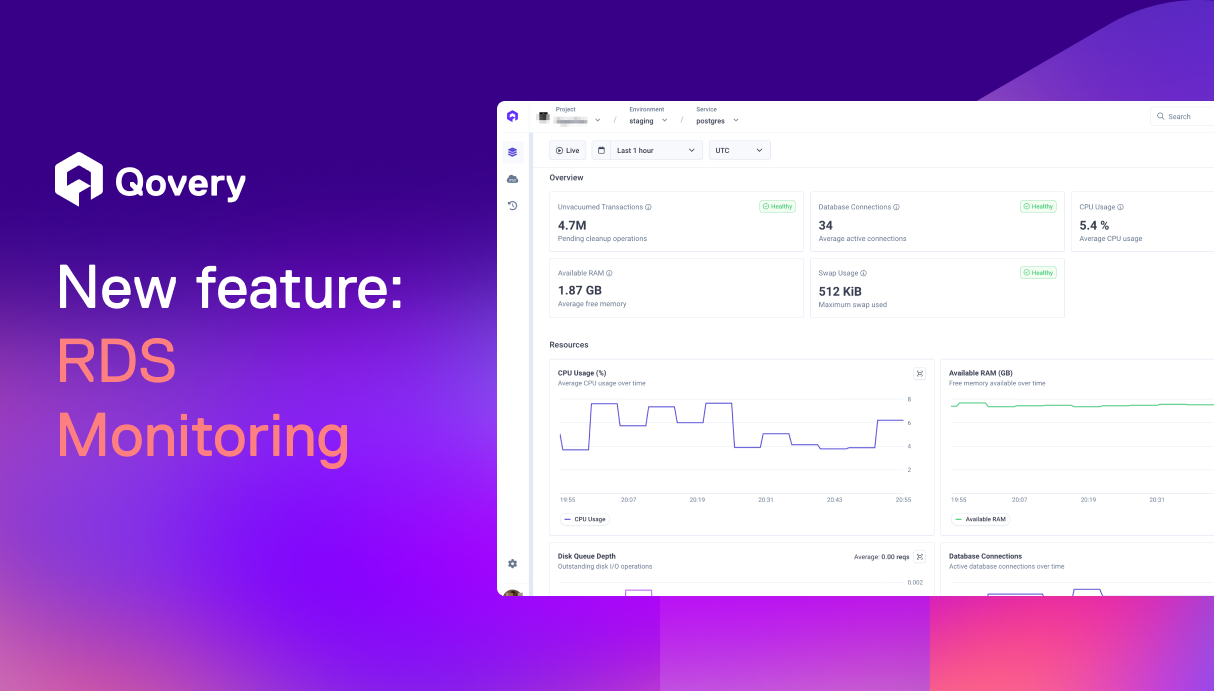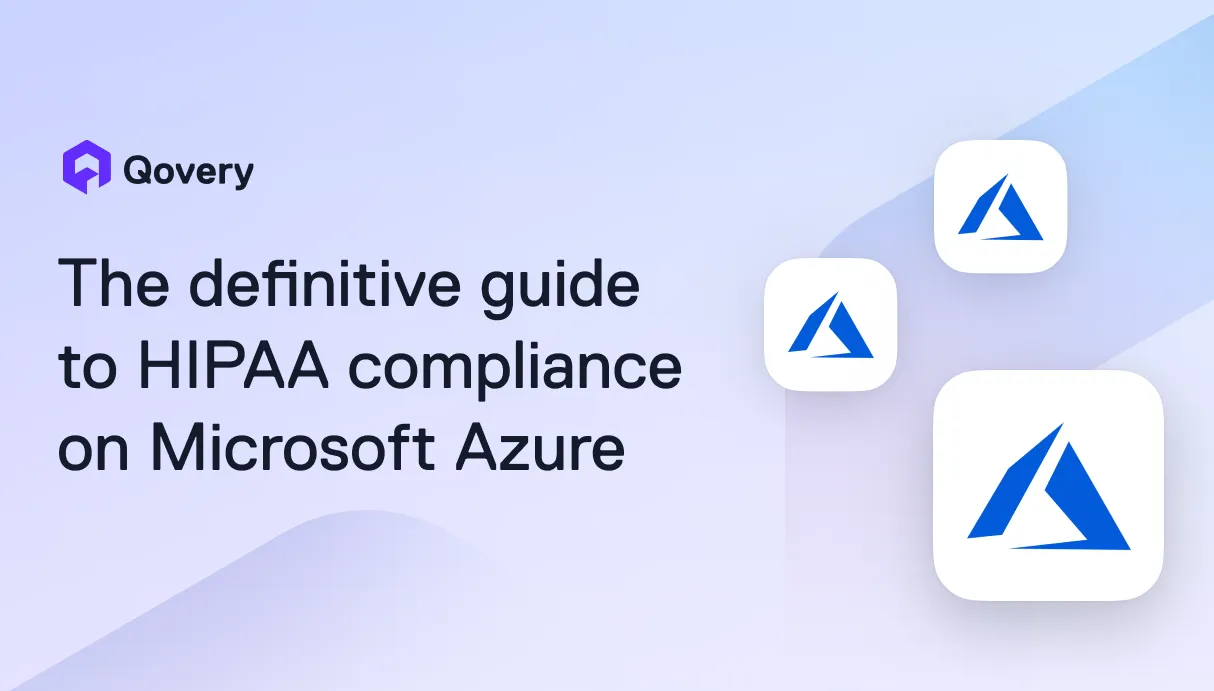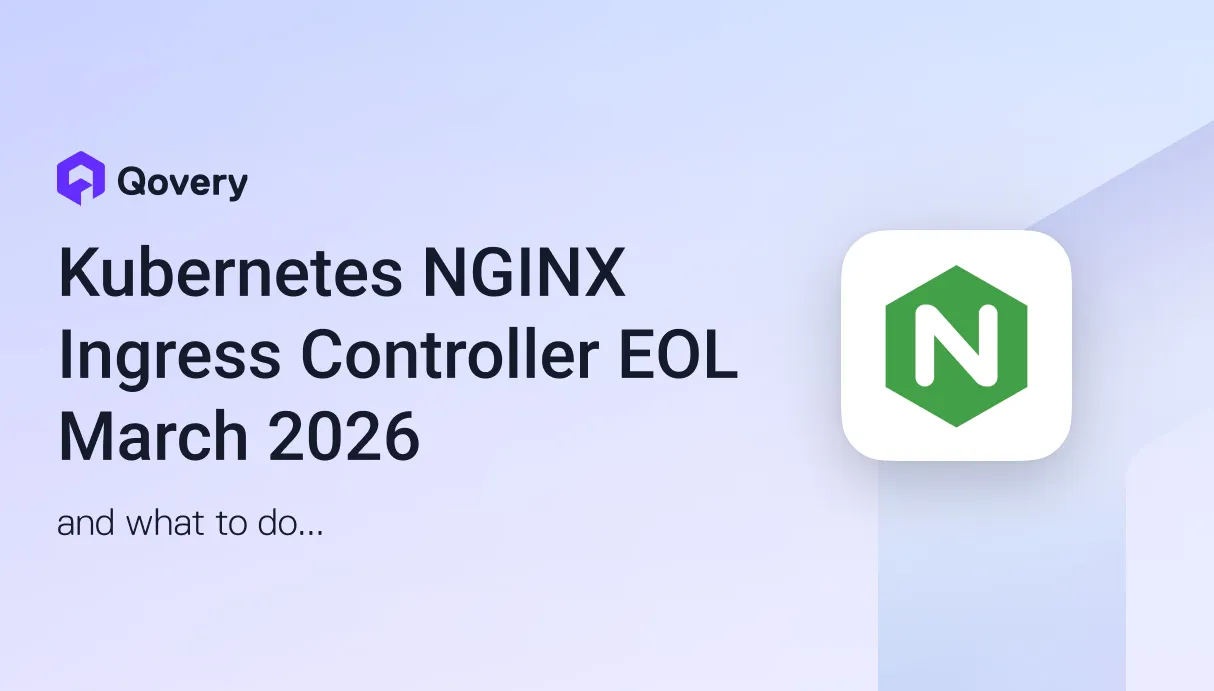
Cloud Sprawl Explained: Taming Uncontrolled Cloud Growth



Key Points:
- Cloud sprawl is the uncontrolled growth of cloud resources, leading to financial waste, security vulnerabilities, and increased operational complexity. It's often caused by decentralized adoption, lack of visibility, and rapid growth.
- To tame sprawl, organizations must implement strong governance policies, centralize and automate processes, and prioritize proactive cost management. Key strategies include robust tagging, resource management, and continuous monitoring.
- Platforms like Qovery provide a comprehensive solution by automating governance, centralizing visibility, and simplifying deployments. This allows companies to innovate and scale while maintaining strict control over their cloud environment, budget, and security.
Think of cloud sprawl as digital clutter that piles up as your organization grows. It happens when cloud resources multiply across different services, accounts, and providers, making them difficult to track. While rapid growth is a good problem to have, unmanaged cloud resources can quickly drain budgets and create significant security risks. The good news is that you don't have to choose between accelerating your engineering organization and maintaining control.
This article explores the causes and impacts of cloud sprawl and provides practical strategies for managing growth, so you can continue to innovate while keeping your budget and security in check.
The Sprawling Problem: What Causes Cloud Chaos?
1. Decentralized Adoption
Cloud sprawl’s main cause is usually a non-standard usage of cloud resources within an engineering organization. When multiple teams rely on cloud solutions, processes can vary between them, which can result in poorly tracked resources.
The lack of central coordination by an infrastructure team results in everyone solving their problems their own way. This creates non-standard processes and technical decisions that, in time, lead to fractured infrastructure and sprawl.
2. Lack of Visibility
When an engineering organization grows without central infrastructure management, nobody has the full picture. Information gets distributed between teams benefiting from infrastructure. This fragmented view makes optimization difficult to achieve.
Without visibility, control, enforcing standards is hard. As a result, test environments keep running after projects end, unnecessary backups pile up, or instances sit idle. Each forgotten resource generates a financial burden and, down-the-line, technical debt for infrastructure teams to catch up on.
3. Shadow IT
When official channels move too slowly, business teams often bypass processes to get resources in place for customer needs. For example, marketing teams can subscribe to an analytics platform without approval or vendor validation by engineering teams. Sales adopts a new CRM without validating interoperability with other tools. Engineering organizations typically discover these shadow deployments only when something breaks.
Shadow IT thrives when official channels are slow or restrictive. Teams usually require solutions fast and thus work around barriers. This results in ungoverned resources that teams only find during audits or breaches.
4. Rapid Growth
Growth brings unique challenges. While the initial infrastructure is frequently manageable, the new scale makes for harder overseeing. Manual tracking can break down at scale and small problems become impactful to the product quality during those times.
Growth also compounds existing issues as small inefficiencies can, with scale, become big spending drains. Initial minor security gaps become serious vulnerabilities as the company grows. Organizations find themselves managing complexity they never planned for, all because they growing at a rapid pace.
The High Cost of Clutter: How Cloud Sprawl Impacts Your Business
1. Financial Waste
Companies can waste a significant portion of their cloud spending on dead resources. Instances can be poorly utilized and run at low usage, or test environments sit empty during downtime. Furthermore, organizations can pay for premium support on underused services or subscribe to superfluous SaaS, hidden costs that can be found in many parts of the infrastructure.
New costs also exist as a result of engineering design and practice. Data transfer fees accumulate from inefficient architectures, reserved capacity sits idle while poorly optimized instances are constantly used. Financial teams struggle to allocate costs or identify savings opportunities as cloud visibility is low across the organization.
2. Security Risks
Every unmanaged resource expands the potential attack surface for an organization. Forgotten instances can run outdated software that doesn’t get security fixes. Leftover test environments can expose production data, or misconfigured storage can leak sensitive information. Security teams need a global overview of the resources in use to be able to protect the company.
Sprawl can create cascading security failures. Compromised development instances provide paths to production systems, while abandoned accounts retain excessive permissions over critical resources. Unpatched services become entry points for attackers. Each unknown resource represents a potential risk that needs to be managed and overviewed by organizations.
3. Operational Complexity
Managing a sprawled environment becomes increasingly difficult as resources multiply without structure. Teams waste time hunting for specific services across multiple accounts, and troubleshooting requires ever-growing work to trace dependencies. Simple tasks like updates become increasingly difficult as the global architecture is complex.
Operational overhead grows exponentially with sprawl. Alert fatigue sets in as monitoring systems flag issues across too many resources. Change management becomes impossible when teams don't know what exists. Knowledge gaps appear as only specific individuals understand portions of the infrastructure.
4. Compliance Issues
Regulatory compliance becomes a hard endeavour in sprawling environments. Organizations can't demonstrate data residency when data flows are not fully understood and controlled. Audit trails have gaps from ungoverned resources and access controls vary wildly across services.
Compliance failures can bring serious consequences. Standard requirements like GPDR become afterthoughts and are difficult to implement, risking fines and losing customer confidence in case of fault. Each unmanaged resource increases compliance risk, menacing the company in its development.
4 Strategies for Controlling Cloud Sprawl
Reining in cloud sprawl requires more than just reacting to problems as they arise; it demands a proactive, strategic approach. By implementing a clear framework and leveraging the right tools, you can transform your disorganized cloud environment into a well-governed, efficient engine for innovation.
Here are four key strategies to help you regain control and ensure your cloud infrastructure supports, rather than sabotages, your business goals.
1. Establish Strong Governance Policies
Good governance starts with clear rules. Define who creates resources, what approvals they need, and which services they can use. Balance control with speed so that teams can get resources provisioned quickly but within safe boundaries.
Following those rules, use automated policies to block unauthorized deployments. It is also important to set budget alerts on infrastructure consumption to make sure that no resource left behind can impact the bills too much.
2. Implement Tagging and Resource Management
It is critical to understand the use of each resource within the system. To do so, tagging and resource management systems are the best way forward. Every resource should be tagged with the owner or product it serves.
This effort structures cost tracking across the products and teams of an organization, this allows for visualizing trends and making sure they are happening as expected for the organization.
This tagging also serves the purpose of making an inventory of resources for each team, making sure that all are correctly in use and necessary for the team to function. Doing so helps identify extraneous infrastructure that can be decommissioned.
3. Centralize and Automate
Central platforms give control without enforcing too much process on teams. Teams can access platforms autonomously and benefit from guardrails to ensure their deployment is within standards. Furthermore, proper centralization opens the possibility of sharing resources across multiple teams, bringing quicker deployment along the way.
It is critical to automate any governance and reduce processes. Platforms can apply tags, enforce policies, and optimize resources behind the scenes while teams benefit from self-service tools to do their job. Good platforms enable innovation by offering a wide range of possibilities to an organization while keeping healthy boundaries to make sure costs and sprawl stay under control.
4. Proactive Cost Management
Ideally, an organization’s infrastructure spending should be tracked in real-time. Modern cloud providers can help with setting up anomaly detection to catch spikes early. It is also useful to run periodic infrastructure reviews to make sure resources cannot be optimized or upgraded, often costing less down the line.
Automated tools can find savings while teams continue focusing on product development. Ensuring that infrastructure review becomes a routine process for owning teams is critical to keeping control over spending and efficiency.
Qovery: Your Partner in Controlled Cloud Growth
Qovery is an opinionated cloud deployment platform. It provides a unified interface for teams to deploy infrastructure automatically while enforcing strong governance, tracking costs, and maintaining security standards. The platform builds a strong bedrock for teams to experiment and develop their product on.
1. Automated Governance
Qovery enforces governance policies automatically across all infrastructure deployments. Teams can only deploy compliant resources following the platform’s guardrails and sane defaults.
Policy enforcement happens transparently during deployment. Developers can focus on applications while Qovery handles all infrastructure governance. Automatic policy updates ensure all resources remain compliant as requirements evolve.
2. Unified Visibility
A single dashboard provides complete visibility across all cloud resources. Organizations can see usage, and configuration for every deployment in one place. Real-time monitoring identifies issues and anomalies before they impact budgets or security.

Unified visibility enables proactive management. Finance teams track spending by project and teams, while security teams monitor compliance across all resources. Operations teams optimize performance and costs as infrastructure provisioning is standardized across the board.
3. Simplified Deployments
Qovery offers streamlined development to all its users through its self-service console. Developers deploy applications easily without needing to learn cloud provider complexities. Pre-configured templates ensure consistent, secure deployments every time.

Self-service deployment eliminates bottlenecks while maintaining control. Automatic configuration prevents errors, and built-in best practices ensure security and efficiency.
4. Built-in Cost Management
Cloud cost optimization features provide continuous savings without manual effort. Qovery can help surface unused resources and optimize for good cost management. With the installation of extra tooling, spending alerts can prevent budget overruns before they occur.
Detailed cost allocation shows exactly where money goes. Teams see their spending impact while projects track against budgets. Through these practices, organizations can optimize costs based on actual usage data and forecast growth confidently.

5. Controlled Innovation
Qovery enables controlled innovation by removing friction from deployments. Engineers can experiment freely within safe boundaries. New services deploy quickly through standard delivery pipelines. This way, innovation happens constantly while ensuring resources stay under control.
The platform grows with organizations, handling bigger complexity without increasing overhead for engineers overseeing infrastructure. The company can iterate and grow confidently while keeping resources under control for all.
Conclusion
Taming cloud sprawl doesn't mean restricting growth. It means building sustainable processes that let teams move fast within guardrails. While uncontrolled growth leads to waste, security gaps, and failure, organizations need safe growth.
Platforms like Qovery make controlled growth work through automated governance, clear visibility, and simple deployments. Teams move faster through official channels than around them. Organizations keep control without hurting delivery speed.
Success requires commitment and tools that make resource management painless. Manual processes can't scale while smart platforms transform cloud chaos into controlled growth.
Ready to fix cloud sprawl?
- 🚀 Sign up for Qovery’s free trial.
- 📅 Book a demo to see how Qovery simplifies cloud management.

Suggested articles
.webp)



.svg)
.svg)
.svg)








.webp)




